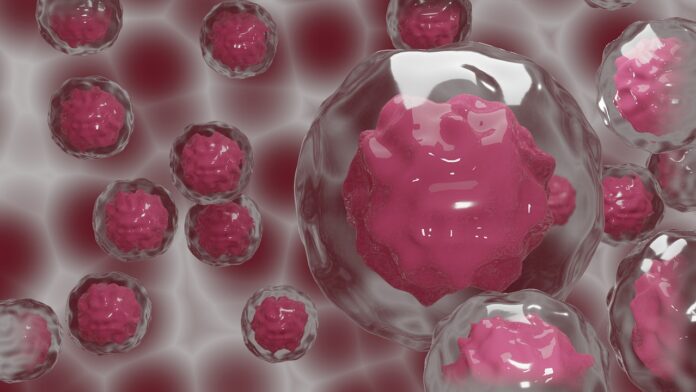The extensive use of platinum (Pt) anticancer medications is severely constrained by developing resistance in cancer cells and dose-limiting adverse effects. Getting around problems with Pt medicines using multi-action hybrid anticancer medications created by combining two or more pharmacophores.
Scientists from Agharkar Research Institute (ARI), Pune, an autonomous institute of the Department of Science and Technology, have discovered a highly potent antitumor agent- Ruthenium−Ferrocene (Ru-Fc) Bimetallic agent- that inhibits new blood vessel development (antiangiogenic) can help treat cancer cases that become resistant to platinum drugs commonly used for tackling the disease.
This newly discovered Ru-Fc agent shows a highly potent antitumor effect in platinum-resistant cancers. It is the first Ruthenium-Ferrocene bimetallic complex that has been rationally developed and has been found so far. It has minimal toxicity but strong anticancer and antiangiogenic effects.
The researchers had previously developed and studied platinum-ferrocene anticancer medicines and observed that platinum-resistant cells had much less resistance to this bimetallic derivative than monometallic platinum medications. Their in-depth biological studies in zebrafish and cellular demonstrated the agent’s anticancer and antiangiogenic effects and its minimal toxicity.
They demonstrated that the Ru-Fc (Ruthenium-Ferrocene) hybrid binds to nucleophilic biomolecules and generates reactive oxygen species, which impair mitochondrial function and put cells’ Endoplasmic Reticulums (ER) under stress, ultimately resulting in poly (ADP-ribose) polymerase-mediated cell death.
Scientists noted, “Finally, in addition to assessing cellular uptake and intracellular distribution, we demonstrated that the Ru-Fc hybrid binds to nucleophilic biomolecules and produces reactive oxygen species, which causes mitochondrial dysfunction and induces ER stress, leading to poly(ADP–ribose) polymerase-mediated necroptotic cell death.”
Journal Reference:
- Manikandan M, Shubhankar Gadre et al. Potent Ruthenium–Ferrocene Bimetallic Antitumor Antiangiogenic Agent That Circumvents Platinum Resistance: From Synthesis and Mechanistic Studies to In Vivo Evaluation in Zebrafish. Journal of Medical Chemistry. DOI: 10.1021/acs.jmedchem.2c01174
